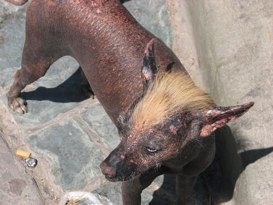Can Increased Cryptid Sightings Be Blamed On Global Warming?
Posted by Justin on April 13th, 2010
Many mistaken cryptids are actually just fugly animals with a bad case of the mange. So what does that have to do with our planet’s current case of global warming driving and increase in sightings of potential Yetis, Bigfoots and Chupacabra?
LiveScience spoke to Mike Bowdenchuck, state director for Texas Wildlife Services, who explained why mysterious, hairless animals are more common in Texas and the southwest than other areas:
“Down here, animals don’t die of mange, because the temperatures are warm enough,” Bowdenchuck said. Rather, the animals live with mange.
“Mange is very common in colder areas, in fact wolves are getting it in Montana right now, and in North Dakota foxes get it,” he said, noting a big difference: “Up there it’s fatal, so you never see animals with the severe cases that we see in the southern climates, because they don’t live long enough for the mites to get that bad to cause the hair to fall off. They die of hypothermia first.”
Animals that have lost their fur are more vulnerable to the cold, so in warmer climates they live longer (and be more likely to be seen). Thus one might conclude that sightings of hairless animals will become more common as the climate warms. The extended forecast calls for more non-Bigfoot, non-Yeti, and non-chupacabra mangy monster sightings.
Why wasn’t this the poster for An Inconvenient Truth?